Native Plant Garden Tour: What Can You Do in Five Years?
- Nuts for Natives
- Sep 28, 2022
- 4 min read
Updated: Sep 30, 2022
Ninety percent grass to ninety percent garden!

A lot! Karen Royer, a Severna Park gardener, read one of Doug Tallamy's books and immediately wanted to change her long time garden to support more wildlife. She was stunned to learn peonies (Paeonia) and crape myrtles (Lagerstroemia) did not support the birds and butterflies she loved.
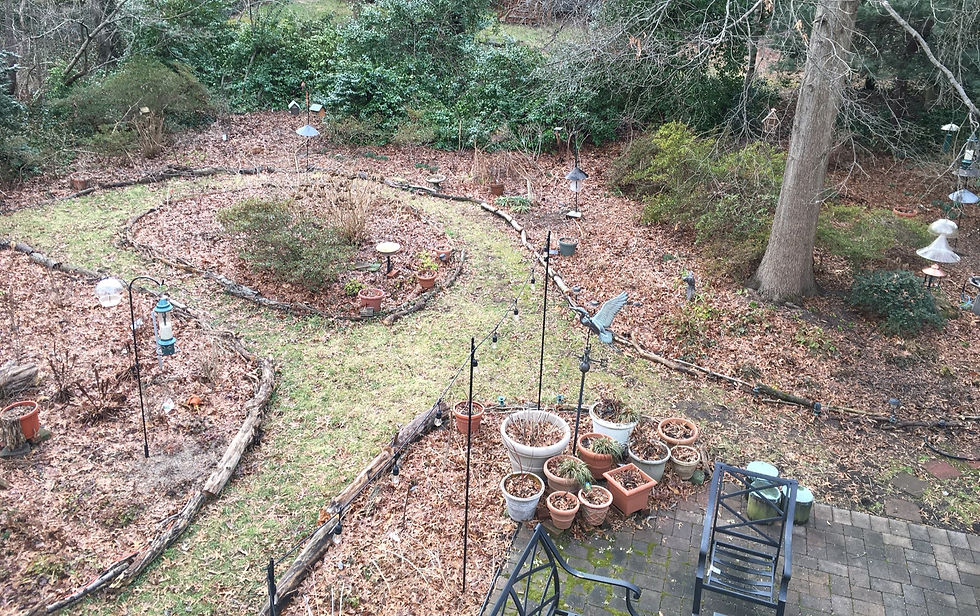
Karen shared a photo of her winter garden earlier this spring. The amazing thing about this photo is the garden was mostly lawn until 2017.

I visited late one morning in early September after an all night and morning soaking rain. The skies were just beginning to clear. As I walked up this path, literally, a yellow swallowtail butterfly and I collided. It circled around my head and eventually flew off. I thought, wow, weird coincidence.
Once I entered Karen's back garden, I realized I was bound to meet up with swallowtail butterflies. Cardinals, catbirds, sphinx moths, hummingbirds, yellow swallowtails, monarch caterpillars, bees, skippers and many more bugs too.
A few minutes spent in Karen's garden is uplifting with sounds of water, life and energy moving around you. What is astounding is the enormous change Karen, and her husband Bob, have brought to their space in 5 short years.
Before, this back garden featured the willow oak (Quercas phelios) surrounded by a grass lawn with mostly ornamental trees at the edges. While Karen planted the willow oak tree now anchoring this verdant space when she first moved in, the rest is all very recent history. Today, paths of grass meander through beds of flowers, shrubs, water fountains and more. While a few of those ornamentals remain, by and large, this is a completely different space!
How did she do it? By digging out the grass and adding layers of wet leaves wherever Karen wanted to make a new bed or expand an existing one. The leaves act as mulch and as they break down, they enrich the soil. Immediately, the area is ready to plant.
Karen's garden is a study in layers -- trees at the edges, shrubs beneath the trees and at the center of every garden bed, and perennials around those. Many of the beds have moving water - a huge attraction to birds. She also has shallow trays of water for butterflies. Butterflies like to "puddle," essentially waddle around in very shallow water or mud!
Today, Karen has an enchanting classroom for her many young visitors including her grandson and neighbors' children alike. The garden is in a suburban neighborhood with many mature trees and a spongy soil that is a mix of loam and sand. The garden is also home to a family or two of voles so Karen is learning which plants they tend to avoid. Her number one tip: ferns!
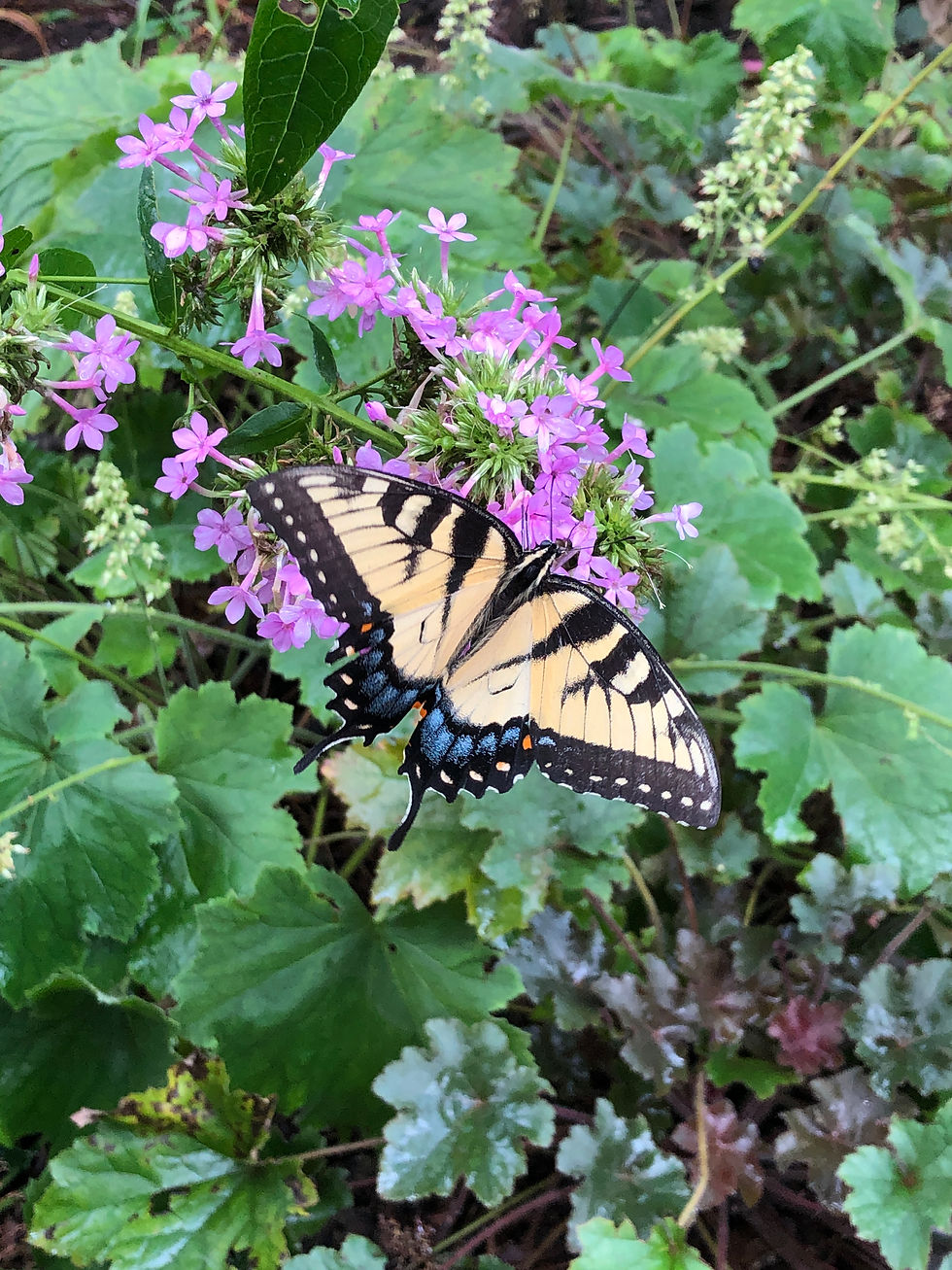
Swallowtail butterflies were everywhere the day I was there, particularly on the phlox 'Jeana' (Phlox paniculata 'Jeana').
Karen is a big fan of natives in containers too. One of her super suggestions is for red twig dogwoods (Cornus sericea). As winter approaches, she cuts the red twigs to create winter arrangements in pots. This also encourages the plant to send up new stems in spring and the fresher stems are always the redder stems. She usually adds 5 or so twigs to each arrangement. She leaves the dogwood stems in the pots and by mid-summer those have rooted in and you have a new shrub!
Another shrub dotted throughout the garden is American beautyberry (Callicarpa Americana). These beautyberries are big! Karen does not cut them back each year so she is getting huge sprays of berries at this point. If you have beauty berry but want to keep it on the smaller side, prune it back to 6" or so in late winter.
Arrowwood Viburnum (Viburnum dentatum) is covered in navy blue berries in September. This is the cultivar 'Chicago Lustre' (Vibrunum dentatum 'Synnestvedt'). This cultivar of the straight species is said to produce more fruit than the straight species. These shrubs grow in sun or part shade and can reach up to 10 feet in height when mature.

Karen has created resting places for the eye which can be really helpful to a very full garden like this one. She uses glades of low growing natives. Here a large drift of New York ferns (Thelypteris noveboracenis) carpets the understory. This is a shade and moisture loving fern.

A swath of native anemones (Anemone canadensis) is a living ground cover beneath a birdbath. With all of the plants and wildlife, these glades really anchor the space.
As we walked, Karen lamented her common milkweed (Asclepias syriaca) had yet to attract any monarch caterpillars this year. And with that, she turned over a leaf and there they were!

Choosing the willow oak when Karen moved in proved to be fortuitous choice given the caterpillar factories they are. More recently, she has added dogwoods (Benthamidia Florida), fringe trees (Chionanthus virginicus) and a bottlebrush buckeye (Aesculus parviflora).
When I asked how she got started, Karen said she asked Baywise, a program of the University of Maryland's Extension Service to evaluate her yard. Their assessment found many more native plants were needed to try to get to the goal of 70% natives recommended by Dr. Tallamy for maximizing the ecological benefit of a garden. "I read another great book by Nancy Lawson called The Humane Gardener and decided to make haste in changing our yard from a food desert (even though it was full of blooming ornamental plants) to a food source." Karen removed nandinas (Nandina domestica) and replaced them with low bush blueberries (Vaccinium angustifolium) and evergreen inkberries (Ilex glabra). "I expanded my existing beds and added perennials such as skull cap (Scutellaria incana), cardinal flower (Lobelia cardinalis), blue lobelia (Lobelia siphilitica) and bee balm (Monarda). I created beds in the sunny areas ... for coneflowers (Echinacea purpurea), goldenrod (Solidago speciosa) and asters (Aster). It was a labor of love because with every native plant addition came a host of wonderful wildlife – birds, butterflies and other pollinators. It’s such fun to see so much life in our yard!"
Karen says she was very fortunate to meet Alison Milligan, a Master Gardener & Naturalist, as well as a Watershed Steward, who agreed to help. Alison must be a talented mentor as Karen has become a devoted native plant advocate!
As for those ornamental trees around the edges; many are still there. They provide privacy screening. At the rate Karen is going though, their days may be numbered.
Happy gardening!





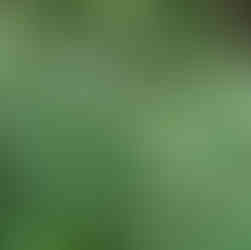

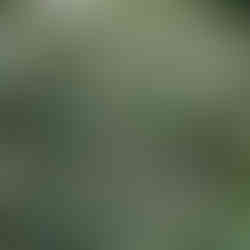











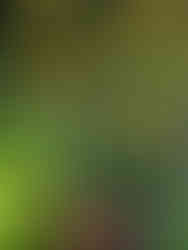



























Comments